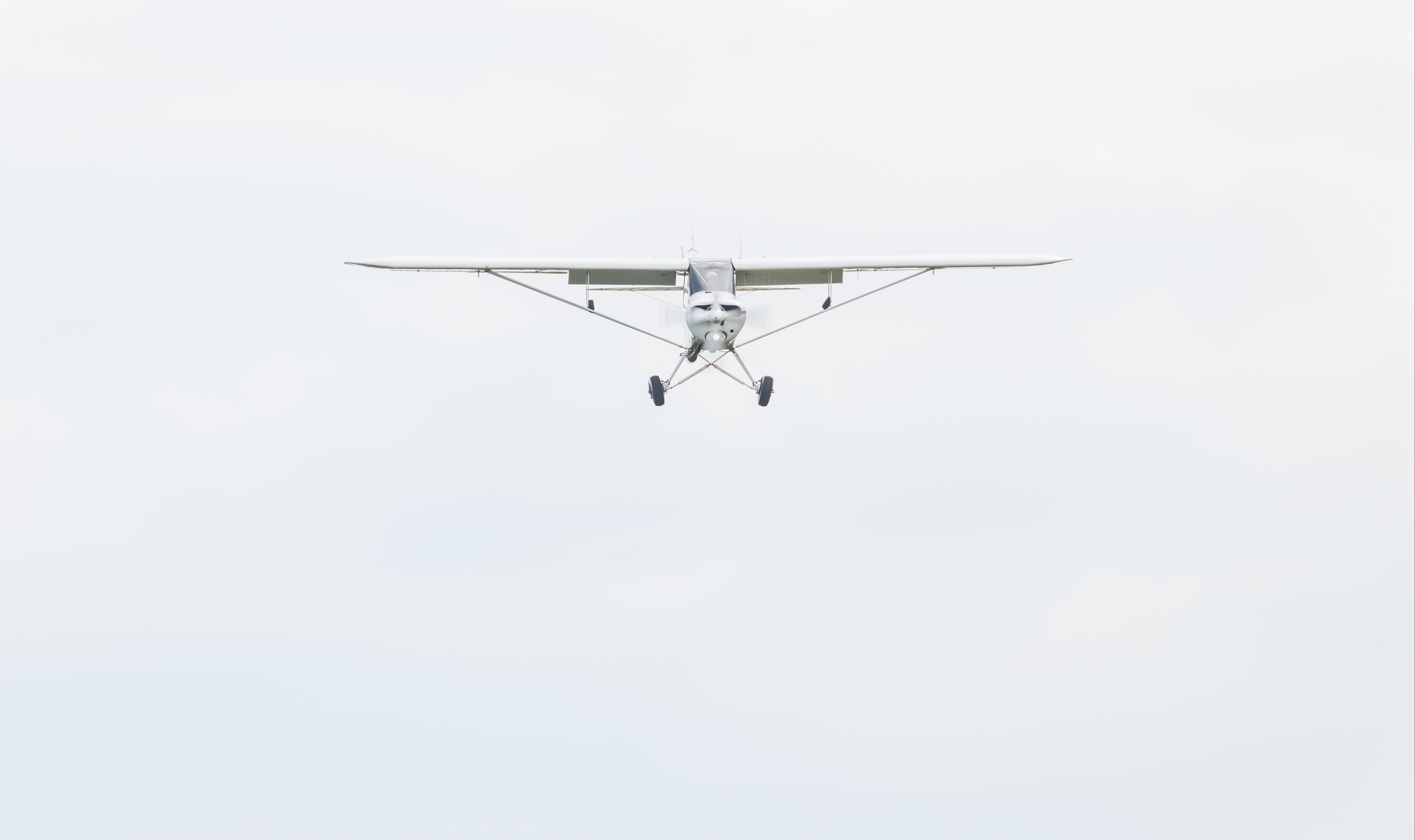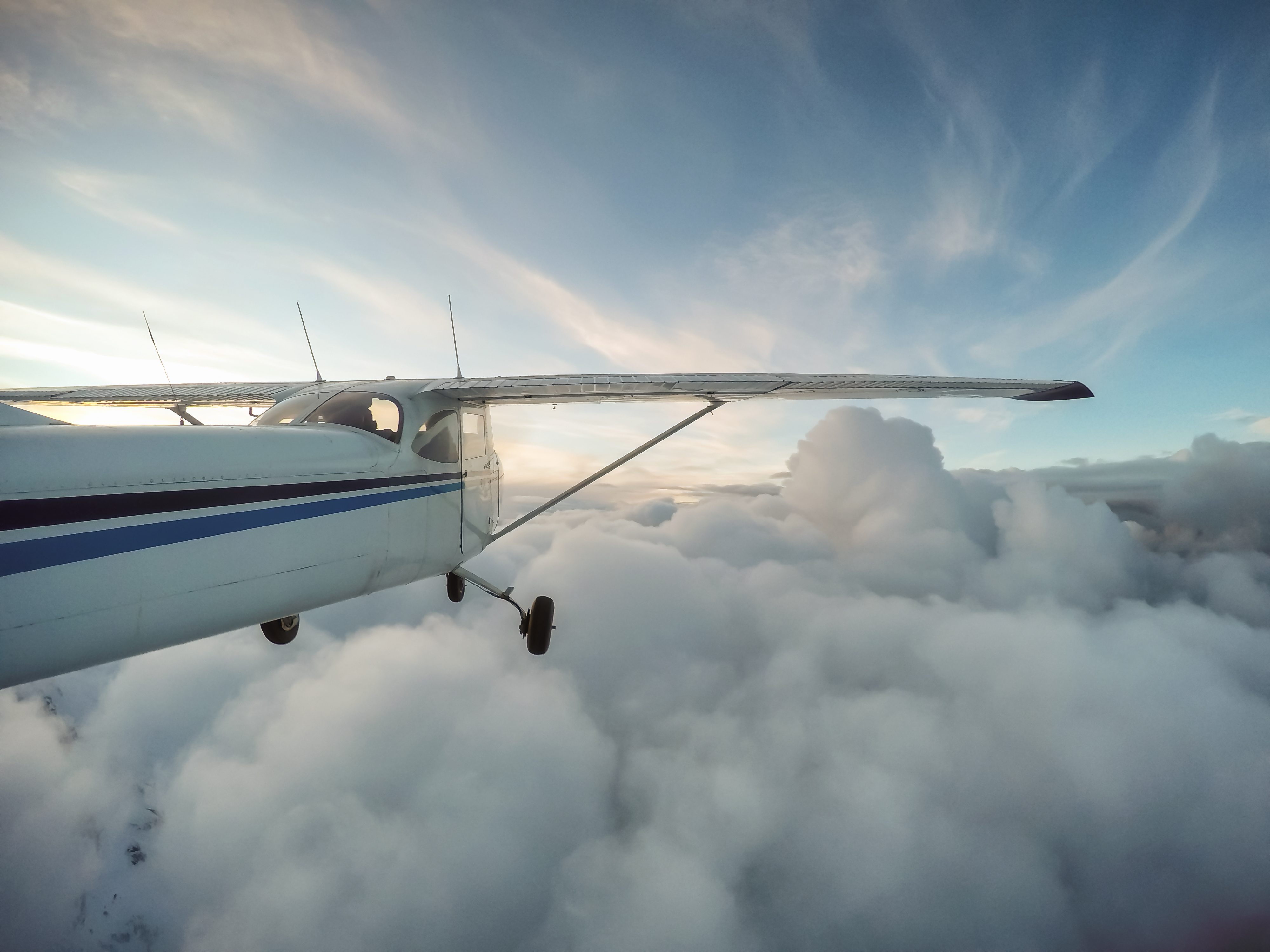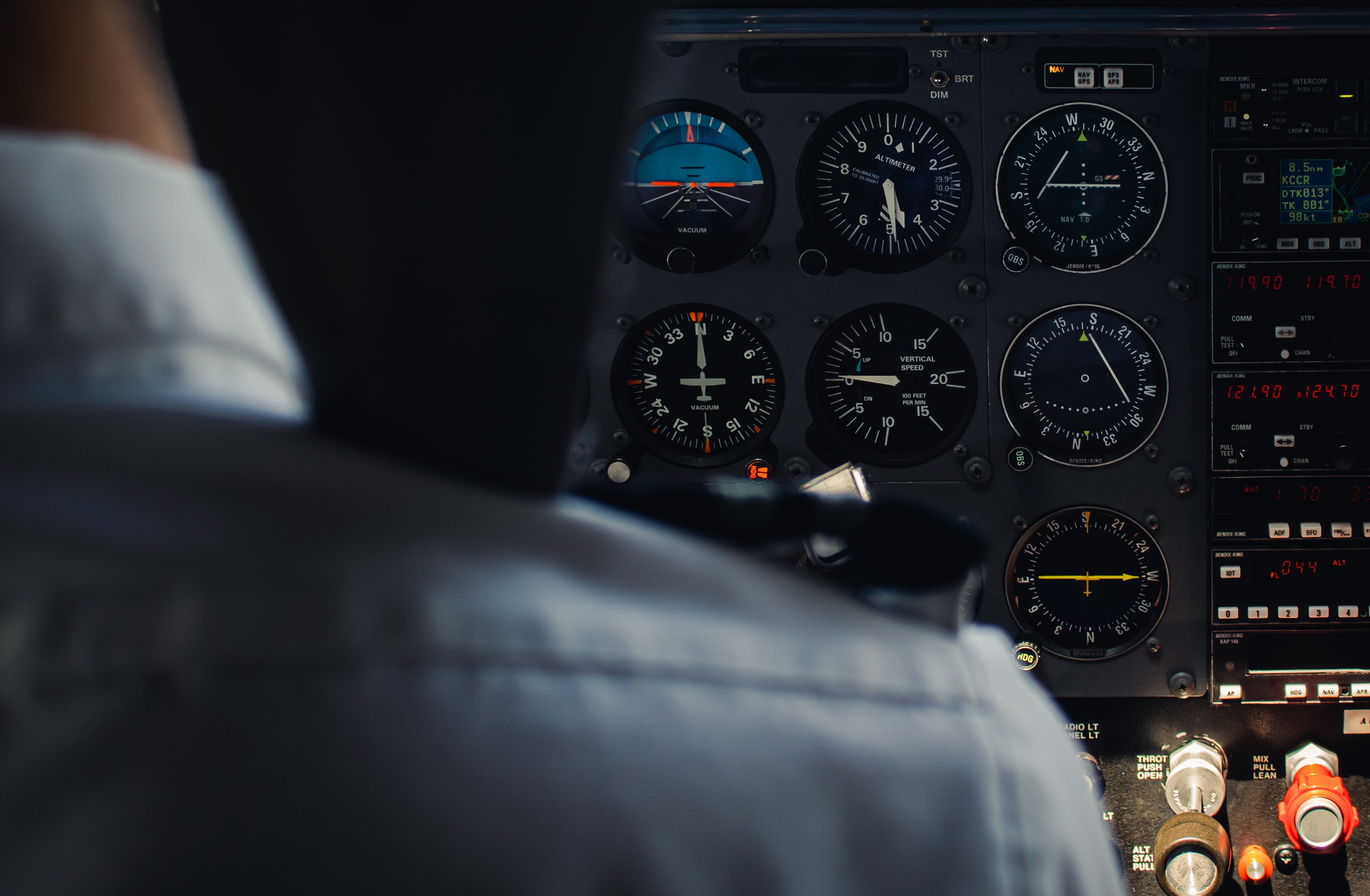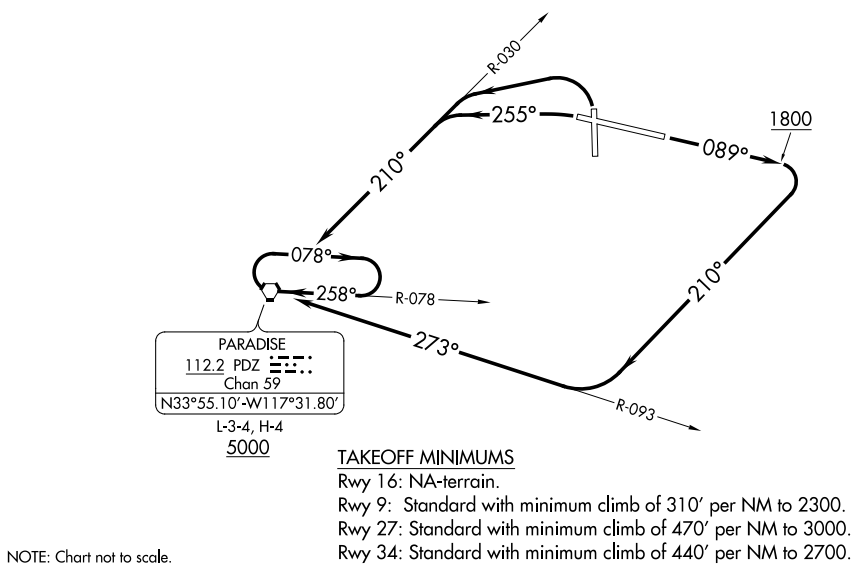3 IFR Holds To Perfect in a Flight Simulator
There is no shortage of articles about using holds in the IFR system. However, in this article, we'll focus specifically on departure and arrival holds and VCOA (visual climb over airport). While VCOA is not technically a hold, it falls in line with the same purpose of a hold in certain departure procedures.
These techniques can be practiced and perfected in a flight simulator, a valuable use of your preparation time.
Departure Holds
First, let's look at a departure hold as depicted in the Riverside Muni (Riverside, California) Riverside Two Departure (Obstacle). The basic idea is that you take off and proceed to the Paradise (PDZ) VORTAC and perform a climbing turn in a hold until you reach 5,000' MSL. At that point, you proceed on course as directed by air traffic control.
It's a simple concept designed to get you well above the surrounding mountains that would shortly be in your flight path. If you take off from Runway 27, you intercept and track the PDZ R-030 radial inbound and make a direct entry tracking the PDZ R-078 radial outbound, using non-standard left turns. If you take off from Runway 9, you would intercept and track the PDZ R-093 radial inbound, execute a parallel entry, and then track the PDZ R-078 outbound.
As you are holding, you also perform a five hundred feet per minute climb. The tricky part is that you are expected to proceed on course after reaching 5,000' MSL, so technically, this is sort of your "expect further clearance" information. Nothing says you have to declare entering the hold (unless you've been instructed otherwise), but it wouldn't hurt to advise ATC that you are established and climbing to 5,000' MSL.
This procedure is challenging in a flight simulator because of the need to maintain additional workload situational awareness. The mountains to the south are a safe distance away, but still, it will make you think about the surrounding terrain in ways you might not think of in Kansas.
Arrival Holds
The arrival hold to an IAF is common and could be assigned, or even required, if you lose communications. Santa Monica Municipal (KSMO) has a fix called DARTS, located on V-186, that serves as the intermediate fix for the RNAV 21 and the VOR-A approaches. The latter has an IAF at ELMOO (southeast), but if you're flying V-186 coming in from the northwest, you're not going to be sent to ELMOO and then have to reverse course and double-back.
For both of these approaches, your published altitudes will be between 4,100-4,200' MSL, so if you were approaching out of 6,000' MSL on lost comms, you'd have to get yourself established on a hold based on your approaching direction and either wait until your ETA or, begin the descending hold if you arrive after your ETA. Both are good exercises to practice in the simulator.
DARTS can be approached from four different directions on V-186 and V-459, so it's a great mental exercise to work out the holding course approach math and type of entry. Both the RNAV Z and RNAV Y RWY 3 have an IAF called WAKER with a published altitude of 3,500' MSL. It's a GPS fix that is not published on the low enroute IFR chart.
The outbound course for the RNAV Z RWY 3 is 099 degrees, and the outbound course for the RNAV Y RWY 3 is 101 degrees. You would establish yourself on the appropriate inbound reciprocal course accordingly. This gives you a good planning workout in the simulator, as you are now in GPS tracking mode instead of VOR tracking mode.
Related Content: The 5 A's and T's of Instrument Approaches
VCOA
Lastly, let's look at VCOA as a departure option that's slightly more formal than a SID. You can read more about it in the Aeronautical Information Manual, 5-2-9, Instrument Departure Procedures (DP) - Obstacle Departure Procedures (ODP), Standard Instrument Departures (SID), and Diverse Vector Areas (DVA).
Essentially, VCOA is designed to keep you from terrain more than 3 nautical miles away and get you going at a climb gradient of at least 200 feet per nautical mile. You take off and perform a climbing turn over the airport within 3nm of the field.
Now, there are some airports (e.g., KHHR, Hawthorne Municipal, Hawthorne, California) where pilots perform a climbing rectangular pattern while in the traffic pattern to gain sufficient altitude to join and fly the LA Special Flight Rules route just west of the field. They need to get to 4,500' MSL to join the KSMO R-132 and track it northwestbound. A small plane likely cannot get to 4,500 MSL from KHHR in such a short distance, but this variation on VCOA works just fine.
In both cases, it's important to remember the winds and how they will affect your potential change in direction as you climb. Both for terrain avoidance and LA Class B airspace avoidance (in the KHHR example), you want to maintain your situational awareness at all times.
You can practice all these maneuvers effectively in a flight simulator, where you can add winds and keep sharp for the times you may need to perform a hold in a slightly different context than just going missed. Challenge yourself to maintain your situational awareness and workload during these sessions, and then when you go fly them in the real-deal skies, you'll feel right at home with aircraft control, safety, and CFIT avoidance.
Share this
You May Also Like
These Related Articles

Instrument Approaches: As Easy as 5 A's and T's

10 Essential IFR Cross-country Flight Planning Tips

